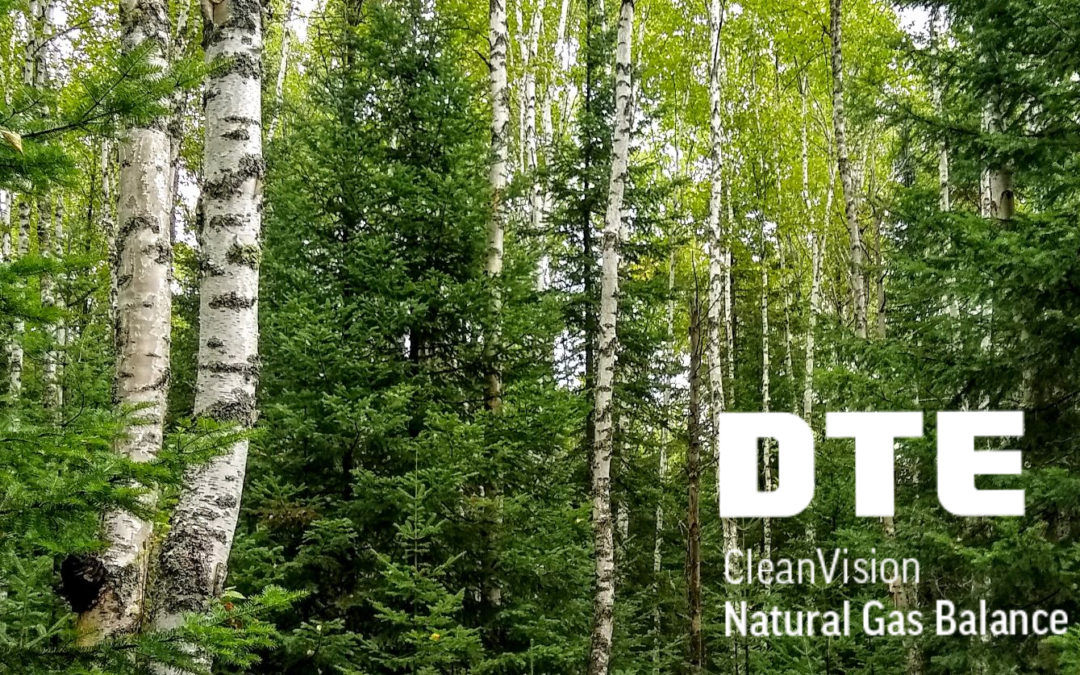
Ben Massie, vice president of Environmental Markets, Bluesource
Ed note: Our CleanVision Natural Gas Balance program includes the use of carbon offsets provided by Bluesource, North America’s largest carbon offset developer. Ben Massie, vice president of Environmental Markets for Bluesource is the guest author for this blog about how the carbon offsets in Natural Gas Balance work.
DTE’ CleanVision Natural Gas Balance program enables residential and small business gas customers the ability to neutralize anywhere from 25% to 100% of the emissions from their natural gas use through a combination of renewable natural gas and carbon offsets.
What is a carbon offset?
A carbon offset (also known as a carbon credit) is generated when a verified project isolates, reduces, or avoids the emission of a greenhouse gas. Carbon offsets are measured in metric tons of carbon dioxide equivalent (CO2e) and each offset is equal to one metric ton. Fundamentally, the purchase of a carbon offset represents an investment into the environmental action project. Without the revenue from the carbon offsets, these projects wouldn’t exist to provide an incentive to environmentally-minded land owners around the world. DTE invests in carbon offsets as part of the Natural Gas Balance program, purchasing the offsets on behalf of customers in the program.
Where do the offsets come from?
Bluesource, North America’s largest carbon offset developer, created the Greenleaf Improved Forest Management project in Michigan’s upper peninsula. Greenleaf’s landowners, who could aggressively harvest the trees on their property, instead committed to significantly reduce or eliminate harvesting on their property. That activity and commitment from the landowner form the basis for the carbon project which can then be issued carbon offsets over a defined period of time. The landowner can get credit for the protection of the existing trees as well the additional carbon those trees isolate as they grow over the life of the project. DTE’s long-term commitment to carbon offsets from the project ensure that the landowner will conserve the forest for decades to come.
Held to the highest standards
To ensure that buyers can verify the carbon credits as real and accurate, there are governing bodies in place called carbon standards. Organizations like the American Carbon Registry, Climate Action Reserve, and Verra come into the picture and establish the rules governing the creation of carbon offset projects and the issuance of the resulting credits. Each standard issues a set of protocols (aka methodologies) that prescribe the exact rules project developers need to follow to generate carbon offsets under the carbon standard.
The most important aspect of every carbon project is its additionality. The additionality requirement for all carbon projects means that they must reduce or avoid more emissions compared to what would have happened in the business-as-usual scenario. For improved forest management projects like Greenleaf, additionality works like this: if a rational landowner would have conserved the trees on their property without the added carbon offset incentive, then that project would not be considered additional and could not generate carbon credits.
Also, the American Carbon Registry has a protocol that specifies all required data and information necessary to execute a forest carbon project. It also specifies the monitoring, reporting, and (very importantly) the verification requirements. All internationally-known, high-quality carbon standards like those mentioned above require projects to undergo independent 3rd party verification before each issuance of carbon credits.
DTE’s investment in high-quality, verified carbon offsets empowers customers to easily take charge of their own emissions. Natural Gas Balance customers have the opportunity to make a simple and smart decision that has a meaningful impact on their environment.
Definitions:
- Carbon offset/credit: equal to one metric ton of carbon dioxide equivalent (CO2e) of avoided or reduced emissions from a certified carbon offset project.
- Energy footprint: the total emissions calculations associated with household or personal energy use, usually in terms of CO2e.
- renewable natural gas (RNG): natural gas created by landfills, wastewater treatment plants, or ag digesters.
- Carbon standards: regulating bodies that govern carbon offset projects.
- Protocols: methodologies created by carbon standards to regulate how and when carbon offset projects are eligible to generate credits.
- Additionality: the requirement that a carbon project’s emissions reductions or avoidance must be greater than what would have happened without the project.
- Improved forest management: a type of forest carbon project that requires landowners to harvest with the health of the forest in mind instead of maximizing timber profits
